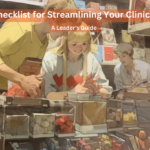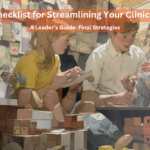As a leader in pharma marketing, building relationships and sharing information with healthcare providers (HCPs) is a key driver of success. Distinguishing between outcomes and outputs can help your team deliver what really matters, ensuring a meaningful impact to your marketing efforts.
Outputs: The Tangible Deliverables
Outputs refer to the tangible deliverables of your marketing efforts. These include the number of brochures distributed, the volume of email campaigns sent, the quantity of webinars hosted, and the frequency of meetings and visits with HCPs.
Outputs are easy to measure and often form the basis of many marketing metrics. While outputs are important, they do not necessarily reflect the success or impact of your marketing activities. For example, sending frequent emails does not guarantee that HCPs will read them or find them useful.

Outcomes: The Real Impact
Outcomes refer to the effectiveness and value of your marketing efforts – think quality, not necessarily quantity. Outcomes can include changes in HCP behavior, increased knowledge and awareness about a product, improved patient outcomes, and stronger relationships with HCPs.
Outcomes focus on the ultimate goals of your marketing efforts and the value delivered to HCPs and patients. An outcome-oriented approach could measure the increase in HCPs’ understanding of a new drug’s benefits and how it influences their prescribing behavior. Outcomes are more challenging to measure, but provide a clearer picture of success.

Strategies for Outcome-Based Marketing
To achieve outcome-based marketing, it is crucial to shift the focus from outputs to meaningful impact. Here are some strategies to consider:
- Engage in Two-Way Communication: interact with HCPs to understand their needs and preferences. Use surveys, feedback forms, and direct conversations to gather insights and feedback.
- Provide Tailored Educational Resources: Customize educational materials to address the specific needs and challenges faced by HCPs. This could include targeted webinars, personalized email content, and interactive workshops that provide practical and actionable information.
- Measure Behavioral Changes: Develop metrics that go beyond activity counts and assess the impact of your marketing efforts on HCP behavior. This could involve tracking changes in prescribing patterns, increased participation in educational events, and more engagement with your content.
By focusing on the results that truly drive change, you can build stronger relationships with HCPs and ultimately improve patient outcomes. As a VP of HCP marketing, embracing an outcome-based approach will enhance your marketing strategy and improve the overall success of your organization.









